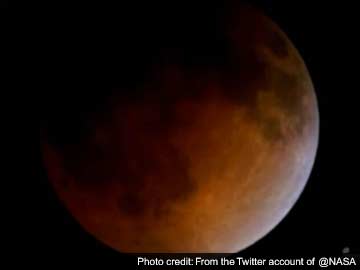
A total lunar eclipse, the first since December 2011, took place on Tuesday with the Americas best placed to get a glimpse. Here is your 10-point cheat-sheet to this story:
Top 10 facts
Tuesday's eclipse was the last full lunar eclipse visible from the United States until 2019, NASA said.
The rare celestial show unfolded as Earth's shadow fell across the moon, shifting its color from bright orange to blood red to brown, depending on local weather conditions.
While the entire event was visible from North and South America, sky watchers in northern and eastern Europe, eastern Africa, the Middle East and Central Asia were out of luck.
The lunar eclipse unfolded over three hours beginning at 0453 GMT. The total lunar eclipse started at 0706 GMT and lasted until 0824 GMT, the US space agency said.
The eclipse kicked off when the moon began moving into Earth's shadow. A little more than an hour later, the moon was fully eclipsed and shrouded in a red glow.
Eclipses occur two or three times per year when the sun, Earth and the moon line up so that the moon passes through Earth's shadow.
Today was the first of four consecutive phenomena of this kind taking place this year and next, which astronomers call a tetrad.
The last time a tetrad took place was in 2003-2004, with the next predicted for 2032-2033. In total, the 21st century will see eight tetrads.
The year's second total lunar eclipse will take place on October 8, with the tetrad's remaining two expected on April 4 and September 28 of next year.
NASA covered the event live and transmitted real time images of the eclipse on its website.

